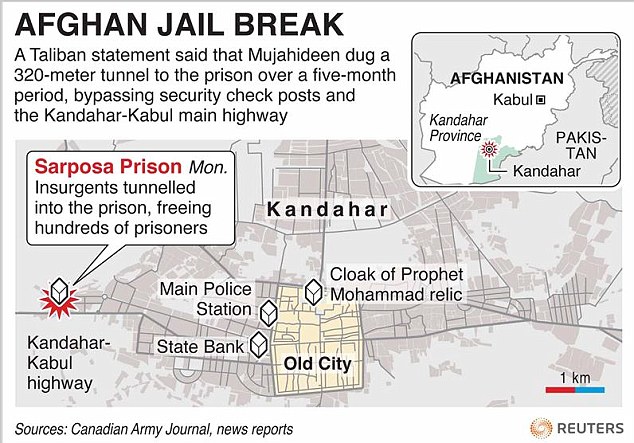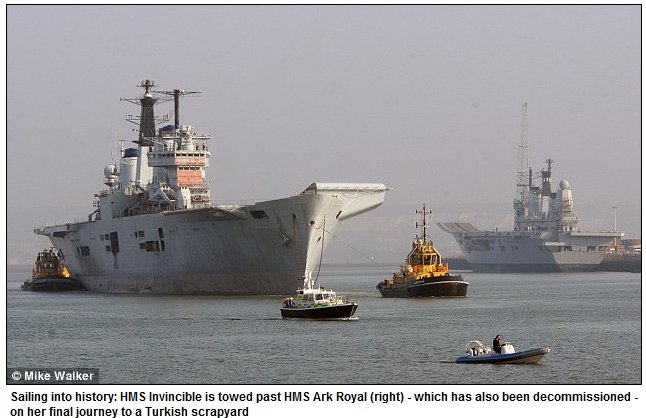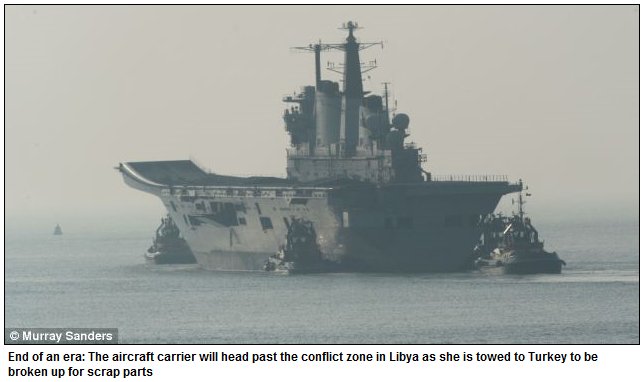In the National Post, John Ivison reports on a new tender for UAVs and wonders if it may herald a reconsideration of the government’s announced F-35 purchase.
Sources said the Department of National Defence is preparing to tender a contract for around six remotely piloted vehicles such as the MQ-9 Reaper, which the U.S. Defence Department estimates cost around $30-million each. A spokesman for DND dismissed the suggestion that armed drones could replace the F-35s, or augment a reduced number of aircraft, as speculation.
The Canadian military has previously leased drones from Israel and the CU-170 Herons flew reconnaissance missions in Afghanistan. But the Herons were never armed and a move to fit munitions on to any unmanned aircraft would inevitably draw criticism from opposition parties. When the idea was raised two years ago, then New Democrat defence critic Jack Harris dismissed it as “morally repugnant” and “robot warfare.”
In 2009, it was mentioned that Canada had been using Heron UAVs for about a year (long enough that Australian troops were in Canada to train on the equipment at that time). Of course, you can’t (currently or in the near future) completely replace manned fighters with UAVs, but UAV capabilities have grown substantially and they can now accomplish many missions that used to require manned aircraft. (See the comments on this article for some useful discussion on that topic.)
The F-35 should be (once all the development and manufacturing issues have been worked out) a very impressive combat aircraft. Here’s a graphic showing the kind of armament the F-35 will be able to use. The problem for Canada and other countries intending to purchase the F-35 is that costs are rising uncomfortably fast:
However, delays and cost overruns to Lockheed Martin’s F-35 strike fighter jet are causing headaches in many NATO capitals. Peter MacKay, the Defence Minister, admitted Tuesday that “the program has not been without problems in timelines and cost estimates.”
He said the government remains committed to giving the air force “the best opportunity for mission success” but refused to confirm that the government still intends to buy 65 F-35s.
In Question Period, the Prime Minister said that there is a budget for the F35s and “the government will operate within that budget.”
The problem for the Tories is that the cost of the planes is likely to rise considerably from the estimated $75-million per plane. Buying 65 jets would burst the $9-billion budget allocated for the F-35 purchase.
The U.S. Defence Department estimates the cost of each F-35 at $195-million this year. The Pentagon said Monday it intends to reduce spending on the F-35s next year and delay future spending because of the soaring costs and technological problems.
Some countries are opting to buy some F/A-18F Super Hornets as a stopgap until the F-35 is mature (Australia, for example, ordered 24 aircraft at a reported cost of A$6.6 billion).
No story about military equipment purchases is complete without considering the fact that the government thinks of it as an economic development program nearly as much as a military purchase. In spite of the remarkably poor economic justification, it has political benefits that easily dazzle parliamentarians and local newspaper editors (in the regions that benefit from the spending, anyway).
The Harper government has argued consistently one reason to stay in the F-35 program is the industrial benefits that have accrued to some Canadian companies. However, one industry insider said more work would likely flow from an order for a less expensive jet from Boeing or Saab. The government is set to unveil a comprehensive review of the Canadian aerospace industry, led by former Industry Minister David Emerson. If his review were to encompass the F-35 purchase, it could provide the Tories with the perfect cover to cancel a program that is turning into a political millstone.
Also in the National Post, Matt Gurney points out that it’s not just the NATO allies getting concerned about the F-35 program:
Ottawa is said to be considering equipping the Air Force with armed drones as part of an effort to replace the aging CF-18 fighter jets. The original plan was to replace them with 65 F-35s, but that problem has been beset by cost overruns and production delays. While the Harper government has remained resolutely behind the F-35 purchase, news has emerged out of Washington that the United States is beginning to cancel or delay orders for the advanced stealth fighter jets. This is a game-changer — it’s one thing for Italy or Israel to get cold feet, but if America pulls the plug on the program, the entire calculus of the F-35′s economics could change rapidly. And not in Canada’s favour.
He also points out that it’s no longer safe to assume that your UAV will perform as expected once your opponent reaches a certain level of technical sophistication:
Last December, Iran announced that it had shot down a U.S. RQ-170 drone over its territory. There was nothing new about that, and nor was it particularly alarming — an advantage of using drones for reconnaissance is that if the enemy does blow one up, you don’t necessarily need to respond with a retaliatory strike, as would be far more likely if a pilot (with a family and an elected representative and a Facebook page) was killed or captured. It also helps avoid a repetition of the awkward Gary Francis Powers incident of the Cold War, where an American spyplane pilot was shot down over the Soviet Union. When America denied the flight had ever occurred, the Soviets displayed a very much alive Powers to the media, humiliating the United States. Having a drone blown out of the sky isn’t nearly as complex. You just build another drone.
After several days, however, it became clear that there was more to the story than we had first been led to believe. Iran hadn’t shot down the drone at all. It had done something much worse — it had hacked the drone, and seized control of it. Iranian ground controllers, having assumed command of the drone, were able to successfully land it in their territory as a prize. Now, one of the most advanced pieces of spy technology in the United States’ military inventory, loaded with all sorts of high-tech monitoring and communications gear, is being reverse-engineered by a hostile regime. Worse: You can be certain that Iran will have no qualms about sharing access with whatever it learns, or perhaps even the drone itself, with Chinese and Russian engineers. Just a small way of saying thanks for all the missiles and UN vetoes Iran’s friends have provided over the years. (Early consideration of sending in U.S. commandos to blow up the drone, or destroying it from afar with an airstrike, were rejected for fear of triggering an all-out war and because U.S. officials hoped that Iran wouldn’t know what to do with the technology — but the Russians and Chinese will likely have no such problems.)
Update: Kelly McParland on the luck of Stephen Harper:
Stephen Harper is one lucky politician.
Here he is, stuck with a bad decision to buy a bunch of fighter planes the country can’t afford and might not need, a decision he has defended so many times there is now no way out save through an admission of error and embarrassing public climbdown. Which, knowing our Prime Minister, we can safely predict would happen just about the time the last polar ice cap melts away.
Then along comes a solution with his name on it, all wrapped up in pretty ribbon and accompanied by a “get out of embarrassment free” pass. Once again you can picture Bob Rae lying awake in bed at night, cursing softly and muttering “How does the *!@*%$-ing son-of-a-#%&% do it?”
Mr. Harper’s gift, which arrived, appropriately enough, on St. Valentines Day, comes in the form of further evidence that other would-be buyers of the F-35 fighter jet are heading for the exits. Italy chopped its order by 30% this week, Britain says it won’t make up its mind until 2015, Turkey has reduced its order by 50% and Australia is having doubts. On Monday the Pentagon said it’s delaying its own purchase of 179 of the planes by five years to save $15 billion and allow yet more time for testing. Let’s repeat that: The U.S., which is building the plane and marketing it like crazy to any ally that will listen, says the plane isn’t ready yet and it can’t afford the thing itself.






